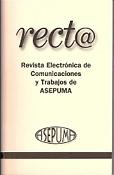Competencia Espacial por Cuotas de Mercado: El Problema del Líder-Seguidor Mediante Programación Lineal
Keywords:
Localización competitiva, problema del líder-seguidor, umbral de preferenciaAbstract
In this paper we consider a location problem where two firms enter the market sequentially, competing for capturing customers located at a finite set of points, to which the competitors offer a product or service. The existing demand is satisfied by the rival firms according to the proximity between clients and facilities. In this model, where the object of competition is the market share and the only customer decision criterion is the distance from clients to the supplier of goods or services, the only relevant decision variable is the location of facilities. A version of the leaderfollower model is considered. The problem is to determine optimal strategies for each firm, the leader and the follower, which make decisions sequentially in order to achieve certain objectives. The proposed formulation incorporates a distance threshold that represents the minimum difference between the distances client-leader and client-follower that provides a change in the consumer preference. The objective of the follower, when the location of the leader is known, is to maximize its captured demand or market share. The optimization problem of the leader is to minimize the maximum market share that the follower would capture.
Downloads
Publication Facts
Reviewer profiles N/A
Author statements
Indexed in
-
—
- Academic society
- N/A
- Publisher
- UMA Editorial. Universidad de Málaga
Downloads
Published
How to Cite
Issue
Section
License

This work is licensed under a Creative Commons Attribution-NonCommercial 4.0 International License.





